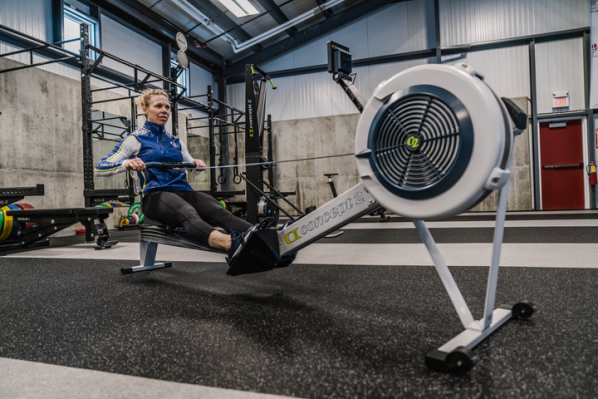Rowing Workout Tips and Tricks

We’ve seen a lot of creativity this year, as regattas, fitness competitions and organized sporting events have had to adjust due to the coronavirus outbreak. There have been virtual events and competitions popping up all over the world and we’ve been amazed at the lengths people have gone to keep us connected and active during these crazy times.
The USRowing Virtual Fall is currently underway and was created to help the rowing community stay connected, compete in virtual regattas, and have the chance to win prizes. They’ve partnered with five of the nation’s largest head races, and others, to come up with 16 great events. The Head Of The Charles Regatta® has gone completely remote with an on water event, a participatory RowErg event and a live RowErg race open to all! Now’s your chance to compete in the premier US regatta.
We’ve put together a few tips and tricks that will help you build your rowing strength and speed, either in preparation for one of the many virtual rowing events, Concept2’s online challenges, or for your own general fitness and satisfaction.
Get the Flywheel Spinning: On the first stroke of your workout, the flywheel is at a dead stop; it is strenuous on the body to immediately pull at race pace with full strokes. Instead, start with several short, quick strokes. This can help get you get to your target pace faster.
Cheat your Rest: Interval workouts incorporate periods of intense rowing with periods of rest. An example would be including a ten minute row with 30 seconds at race pace followed by 90 seconds rest. If you start the “30 seconds at race pace” on a stopped flywheel, it will take a few seconds to get started and find your race pace. These seconds at wildly variable paces will affect your average pace. So how do you ensure that you hit your race pace for at least 30 seconds? Start rowing before your 90 seconds of rest are up. Using five strokes to “build” into race pace is less strenuous on the body than trying to haul on the first stroke. This strategy also ensures that you’re at race pace for the entire interval. It may sound “harder” to have less rest, but your workout will be more productive and your intervals will more accurately reflect your racing ability. Cheating on rest is only cheating the clock, not your fitness!
Up Two, Down Two: On strenuous workouts, it is easy to lose focus and fall into technique errors. Be your own coxswain, and be mindful of changes you can make to improve your stroke when the numbers on the Performance Monitor are slipping from where you would like them to be. A helpful reminder is called “Up Two, Down Two”: focus on bringing up the strokes per minute on the drive by two, but relax the speed of the recovery by two. To speed up the drive, firm up the pressure in the legs and accelerate the hands into the body. On the recovery, relax on the slide and breathe. Overall, the stroke rating should stay the same. (In fact, if the stroke rating increases, you have not relaxed the recovery enough!) The improved ratio should emphasize your efforts into the drive while making the recovery more comfortable.
Rule of Tens: Rowers use “Power Tens” to focus their efforts by counting a series of ten strokes. When and how is this helpful on the RowErg? Concept2’s Meredith Breiland offers this explanation: “Mentally, I calculate 10 strokes for every 100 meters. So if I have 300 meters to go, that is approximately 30 strokes (or three Power Tens). I find that this math approximates well at a 2:00/500m pace, even if my strokes per minute (s/m) vary. As every good coxswain knows, it also helps to pad a few extra strokes to the finish than to have to add in a few more when the crew is mentally done. (A strong sprint finish also brings the spm up, which adds a few more strokes.) Find out what math works best for you and your rowing ability. I love to cut and slice my workouts into manageable mental bits. Depending on the workout, the last 300 meters of my workout may be managed in any number of ways”:
“Only thirty strokes to go, let’s count them out as three Power Tens!”
“Relax and breathe for 10 strokes, then take 2 strokes to bring up the stroke rate, and finish strong with two Power Tens.”
“Hang on for 200 more meters; don’t even look at the Performance Monitor. Then sit up and GO! Fifteen big strong strokes!”
“Stay at this stroke rating for 100 meters, then bring it up 2 spm for 100 meters, then bring it up higher for the last 100 meters.”
What are some of the mental games you play to get you through a workout? Get creative, and you may find that you can get through those tough strokes just a little bit easier.
